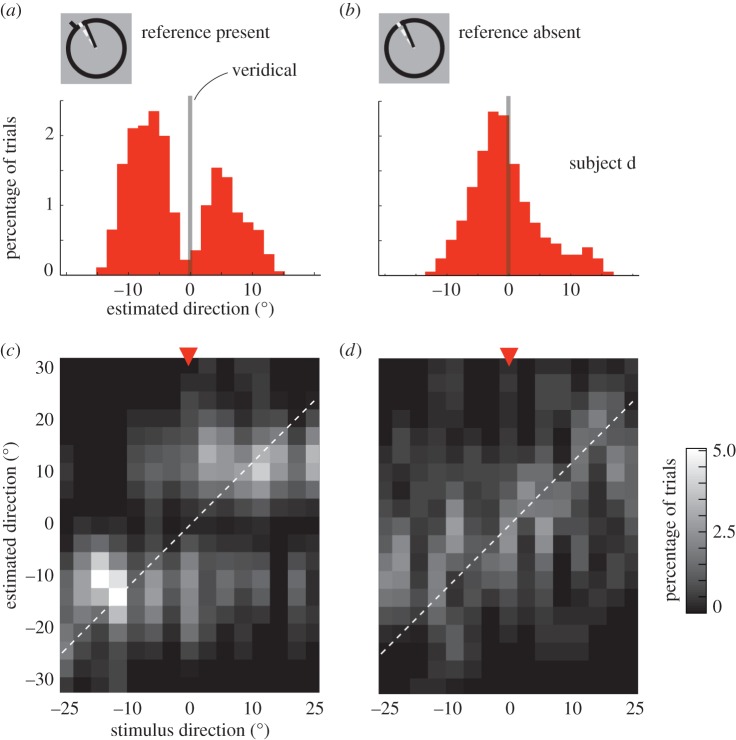Figure 2.
Behavioural results, reference present or absent. Estimated motion directions on the 30% of trials in which subjects performed the estimation task, following fine discrimination. (a) Example histogram for one stimulus direction and coherence (subject d, 0°, coherence 4%). When an explicit reference is present during the estimation period, estimated directions are shifted away from the veridical motion direction (grey line), resulting in a bimodal distribution. (b) However, in trials that are otherwise identical, when the reference is taken away while subjects estimate the perceived direction, the bias disappears resulting in a unimodal distribution. (c,d) The joint histograms show estimated directions for all (true) stimulus directions. Data in (c), obtained when the reference line was present, show an idiosyncratic pattern of responses. There is repulsion from the reference: few stimuli are estimated as moving at 0° (the direction of the reference). There is also some evidence of attraction to the reference for stimuli moving in directions more than about ±10° from the reference. When the reference was absent during estimation, the repulsive and attractive effects disappear and most estimates fall along the diagonal, indicating veridical responses. (Online version in colour.)

